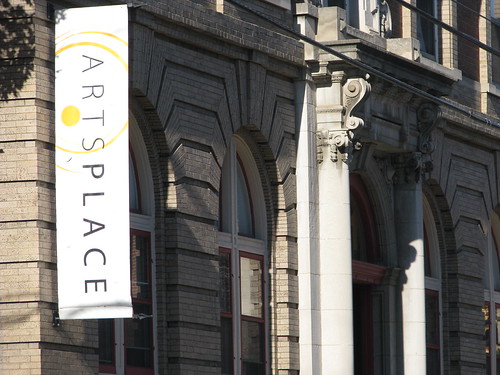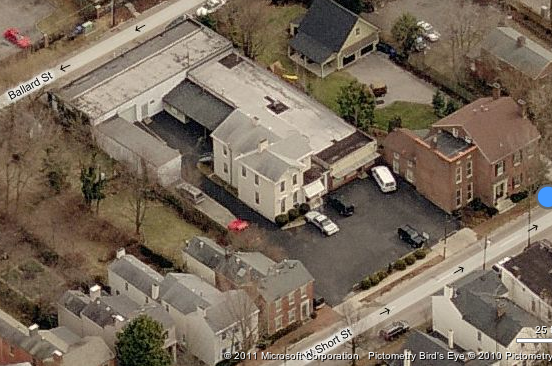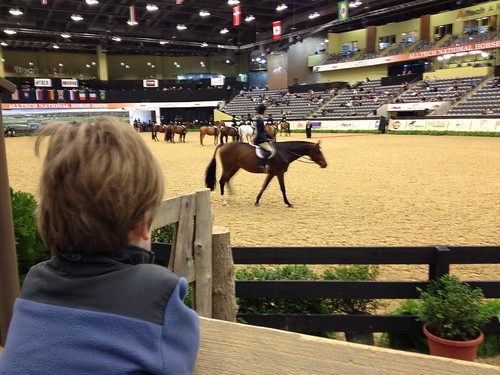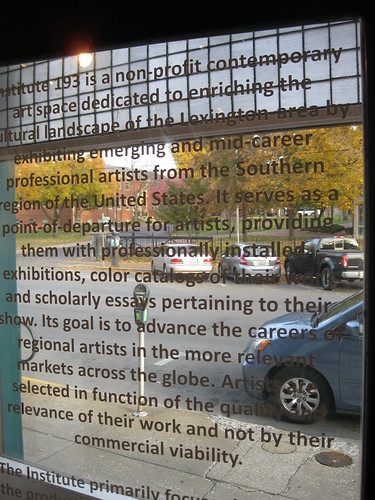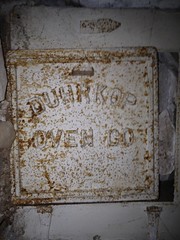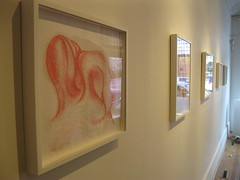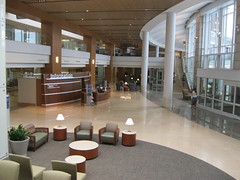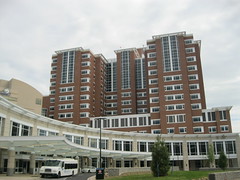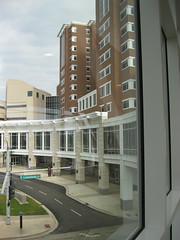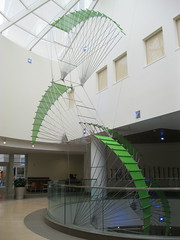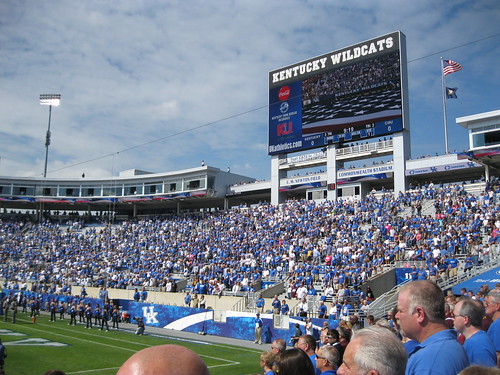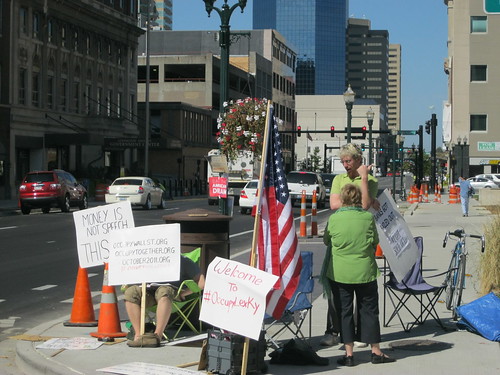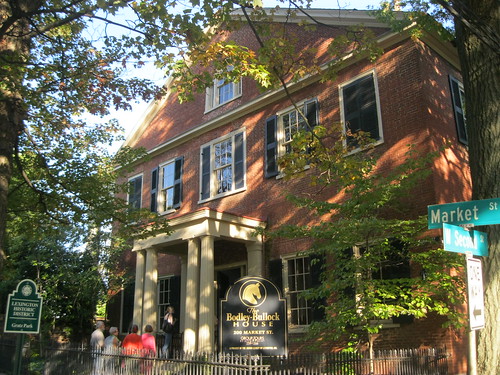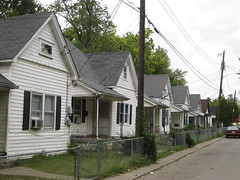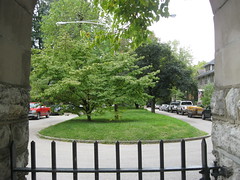 |
| Helicopter Hovering O’er Lexington, Ky. |
The Lexington Financial Center. 250 West Main St. The Fifth Third Bank Building. The Big Blue Building.
Regardless of the name you use to describe Lexington’s tallest building, you may have noticed a little activity over the weekend at the top of this 410 foot tower. A couple of weeks ago, I tweeted an inquiry about what had happened to the top of our most recognized skyscraper. Quick to my aid, the Lexington Streetsweeper advised me that Fifth Third Bank had changed its logo and that the building’s signage was being replaced.
 The bank’s logo was actually changed in 2007 to include a green horizon – intended to evoke a sentiment of growth and of possibilities – behind the classic 5/3 shield, though it is only now being brought to our skyline. The new logo would replace the old logos on the north and south faces of the landmark building that had been in place since Fifth Third moved into the skyscraper in 1996. The Financial Center first opened on June 16, 1987, with the flower-like logo of the Bank of Lexington.
The bank’s logo was actually changed in 2007 to include a green horizon – intended to evoke a sentiment of growth and of possibilities – behind the classic 5/3 shield, though it is only now being brought to our skyline. The new logo would replace the old logos on the north and south faces of the landmark building that had been in place since Fifth Third moved into the skyscraper in 1996. The Financial Center first opened on June 16, 1987, with the flower-like logo of the Bank of Lexington.
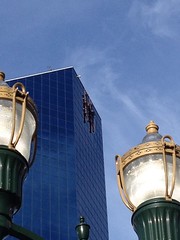 On Friday, a helicopter landed at Centrepasture and I quickly learned of the daring feats that would be accomplished on Saturday. And though our Bedouin friend had both his camel and back turned away from the helicopter and all of “Centrecopter,” I was intrigued.
On Friday, a helicopter landed at Centrepasture and I quickly learned of the daring feats that would be accomplished on Saturday. And though our Bedouin friend had both his camel and back turned away from the helicopter and all of “Centrecopter,” I was intrigued.
So I could not help but return to the scene Saturday morning. There, I witnessed men rappelling from the peak of that blue tower while the helicopter hovered overhead – mountings for the new signage hanging from it by only a few cables. High winds left one of the rappellers suspended by only his harness and it was decided to postpone the project until calmer winds prevailed. You can see how fast the wind was by watching this video – look at the clouds!
As for when the project will continue, we don’t know. Each of the two signs to be installed weighs 10,000 pounds. For safety reasons, all nearby streets are closed during the installation. So, too, are all businesses occupying the top three floors in any building under the flight path.
According to the LHL, the new signs are 26 feet wide, 24 feet tall and 60% more energy efficient than the old signage. But until the weather permits, we will just have to enjoy Lexington’s newest tic-tac-toe board:
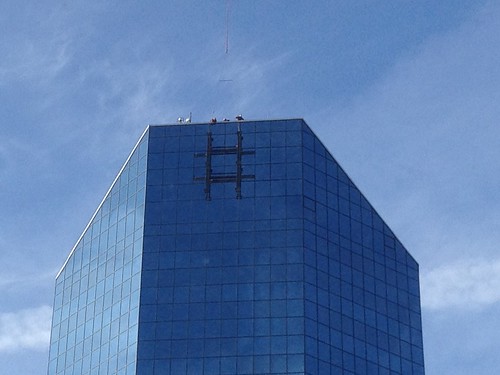 |
| Lexington’s Largest Tic-Tac-Toe Board – Lexington, Ky. |
Look for an update when the sign is actually complete. In the interim, check out the gallery (including videos) of the transformation.

